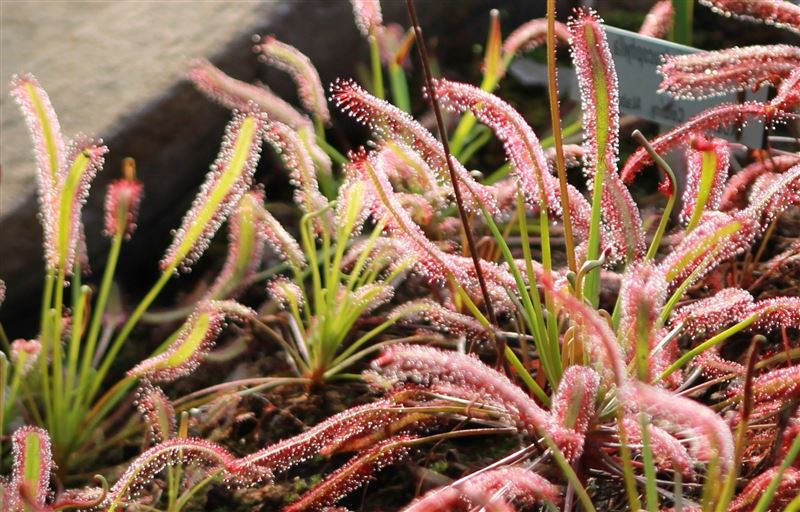The Cape Sundew (Drosera Capensis) is a species of carnivorous plant native to South Africa. It grows in dry, sandy, open areas as well as marshy spots in the summer and spring months.
Cape sundew photos:
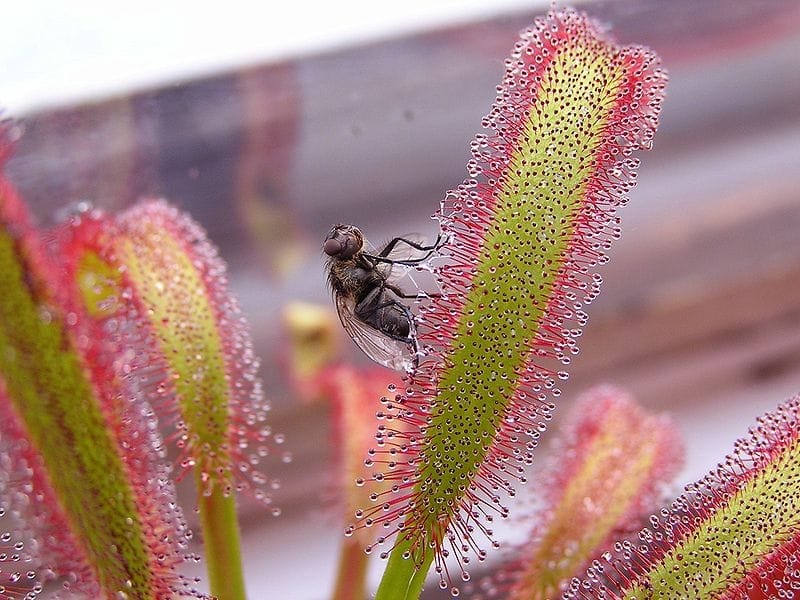
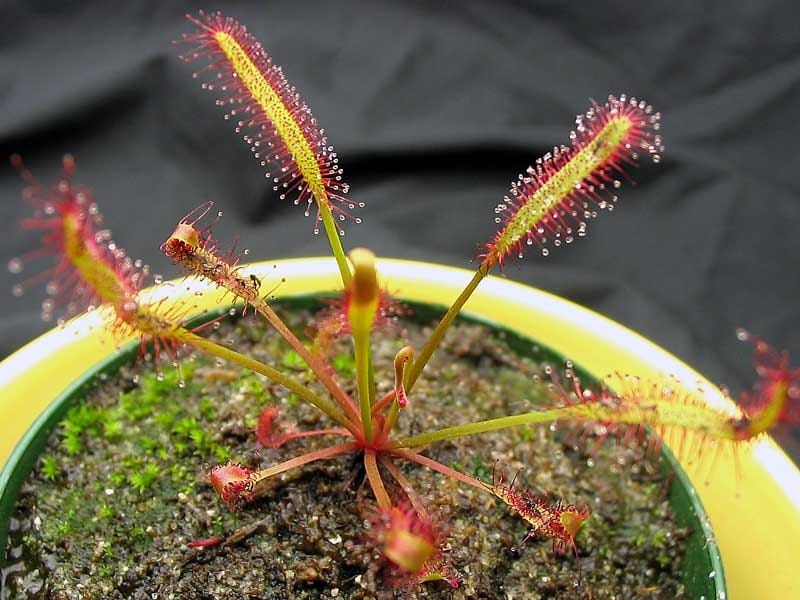
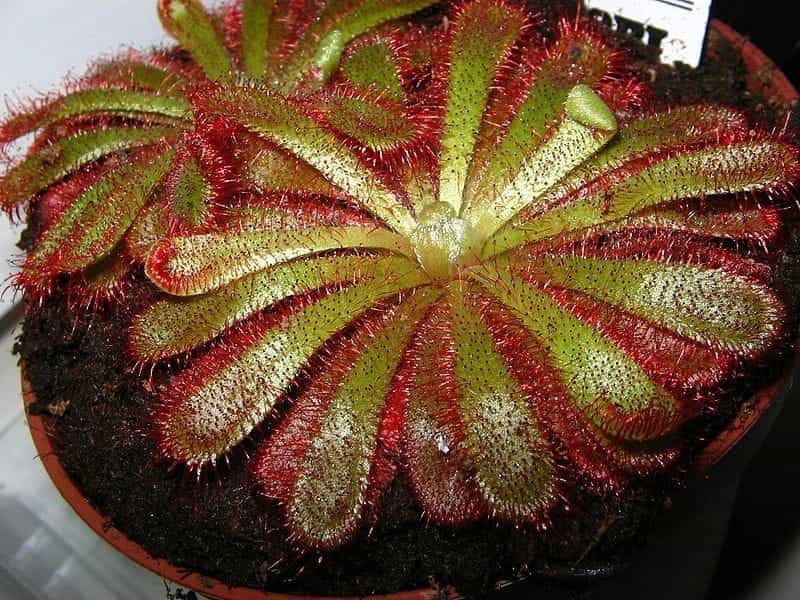

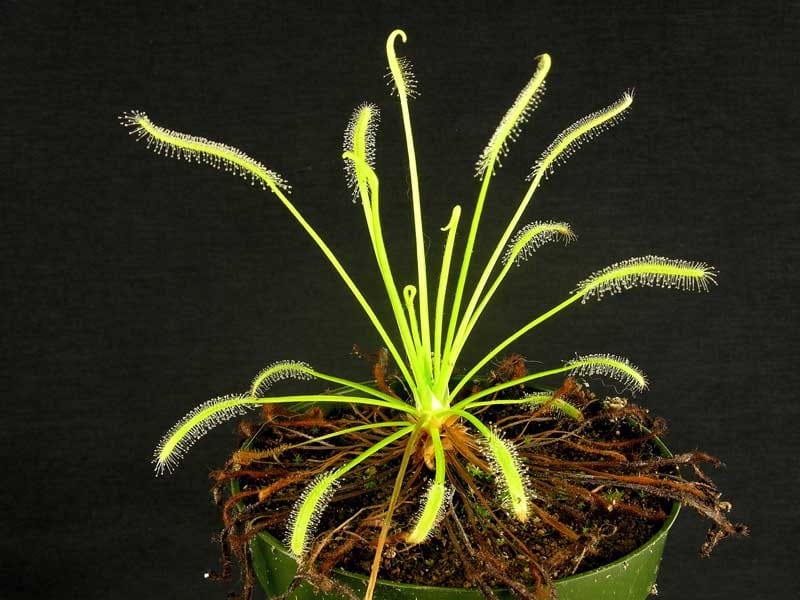
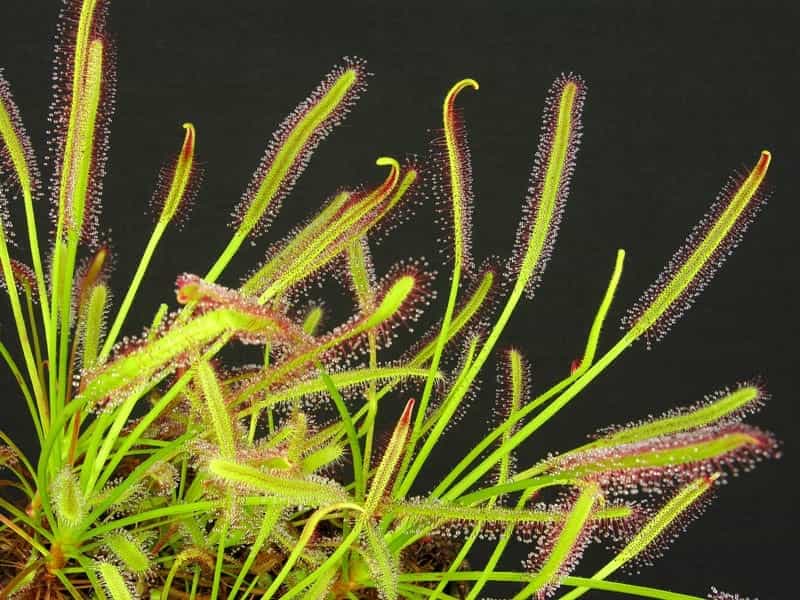

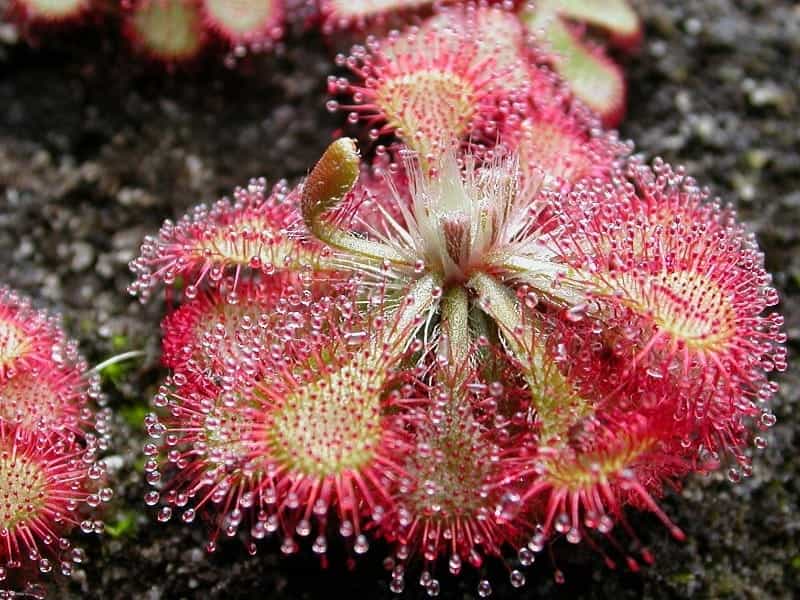

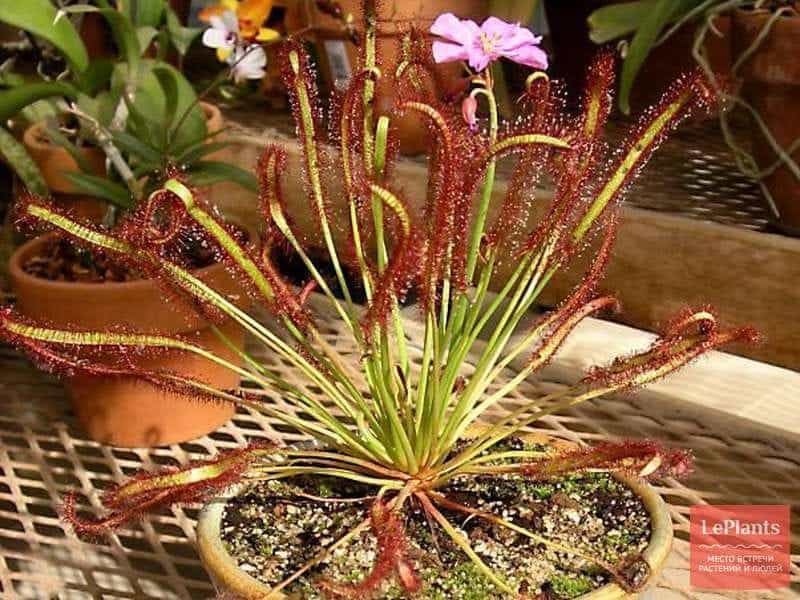
The Cape Sundew is 2-6 inches tall and has long and thin hair-like sticky leaves spread out in an umbrella-like form or rosette. The leaves have red tentacles at the ends, which hold and trap prey using a sticky substance secreted from glandular hairs.
The Cape Sundew is active during the day, as it needs bright sunlight to carry out photosynthesis.
Cultivation
The Cape Sundew can be grown with much success in potting mixes containing peat or turface mixed with horticultural sand. The potting mix must be kept moist at all times and in a location with a lot of sunlight.
Carnivorous Properties
The Cape Sundew produces bright and sticky tentacles at the end of its leaves, which act together like an insect trap. When an insect touches these tentacles it becomes stuck, and the plant then curls its leaf around the struggling insect, further blocking any escape route. The tentacles also release digestive enzymes that break down the insect’s body for absorption by the plant.
Conclusion
The Cape Sundew is an interesting and unique plant species that is native to South Africa. It has distinct and fascinating carnivorous properties, and can be quite easy to grow with the right potting mix, location and care.
